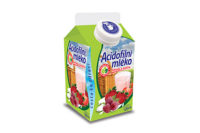Designing Sustainable Packages for Dairy Foods
Take a holistic and collaborative approach to packaging design. This approach is about leveraging all of the design-related components early in the new product idea process.

Over the last five years, there has been more thought and attention given to design and sustainability issues early on in the packaging process. This will become even more important in the future. So it is critical at the beginning of the development process to consider a package’s design, sustainability and end of life.
Dairy processors need to take a more holistic and collaborative approach to packaging design. Holistic Packaging Design is about leveraging all of the design-related components early in the new product idea process.
Holistic Packaging Design is an all-encompassing brand and development tool to enhance overall package success rates. When key packaging design elements are brought together early and reviewed and debated, you can make clear decisions on the spot. For example, it is critical to have a package that is right for the product, from a value proposition. And it is important to consider end of life in the design phase to understand how the packaging will be repurposed after use.
As one considers sustainable packaging design, it is important to start at the beginning. We recommend using the Sustainable Packaging Coalition’s definition for sustainable packaging which, like HPD, is a more encompassing and comprehensive view of what goes into sustainable packaging. We need to also consider the many hot topics currently impacting and influencing sustainable packaging. Examples include:
- Zero waste. Remember, we said start the design with the end in mind.
- Bio-based and post-consumer materials. You need to consider cost and EOL ramifications, that is, will the package be recyclable? Reusable?
- Laws and regulations. Are there any potentially toxic components in the package?
- Transparency. Don’t over-package, and be careful on green washing. For example, the use of biodegradable additives that break down a package into small fragments can be quite controversial.
- Retailer requirements. You will need to complete a scorecard for Wal-Mart. Some retailers won’t accept certain packaging materials, such as PVC.
As you can see, the role of early knowledge development is key to overall packaging design. For example, Nestle uses a software tool called PIQET and has run more than 2,500 samples through the process to get an understanding of the environmental footprint. The SPC has a similar tool called COMPASS. There are other tools available to provide a quick environmental packaging scan. After all, about 80% of the package carbon footprint is established at the design stage.
As you conduct and consider consumer research and insight, recognize that a smaller group of consumers will be willing to pay more for a package that is perceived to be “more environmentally friendly.” I am still trying to figure out what that means, and apparently so is the Federal Trade Commission as it continues to work on the development of its “Green Guides” update.
As stated earlier, there are lots of questions that need to be answered early in the design phase. Not doing enough work in the front end is likely to result in failure at the back end.
We are starting to see more packaging come to market with distinct sustainability claims and benefits. If you want to be smart and hedge your bets, be sure that you provide more than sustainability as a benefit. Examples might include enhanced performance and sustainability or better portability and enhanced end-of-life solutions.
Ecologic introduced a new package format that has an exterior shell made from old corrugated containers, using molded pulp technology similar to that used on pulp egg cartons. The inner liner contains a thin plastic film milk pouch and screw-off top. The package is designed so that the plastic liner can be removed from the recyclable molded pulp body. (Of course in Canada, many companies do away with the body of the container all together and sell milk in a pouch only, which the consumer then places into a plastic jug at home for dispensing).
Procter & Gamble, Kraft Foods, Coca-Cola, PepsiCo and McDonald’s are among the companies that recognize the importance of sustainability in packaging design. It is important to remember that recyclability, carbon footprinting, bio-based materials, the Sustainable Packaging Coalition definition, and brand enhancement opportunities are all elements to consider when embarking on a sustainable package design project.
It isn’t easy to get all of the answers on your sustainable packaging journey correct the first time, but as Confucius once said, “A journey of a thousand miles begins with a single step.”
Looking for a reprint of this article?
From high-res PDFs to custom plaques, order your copy today!




